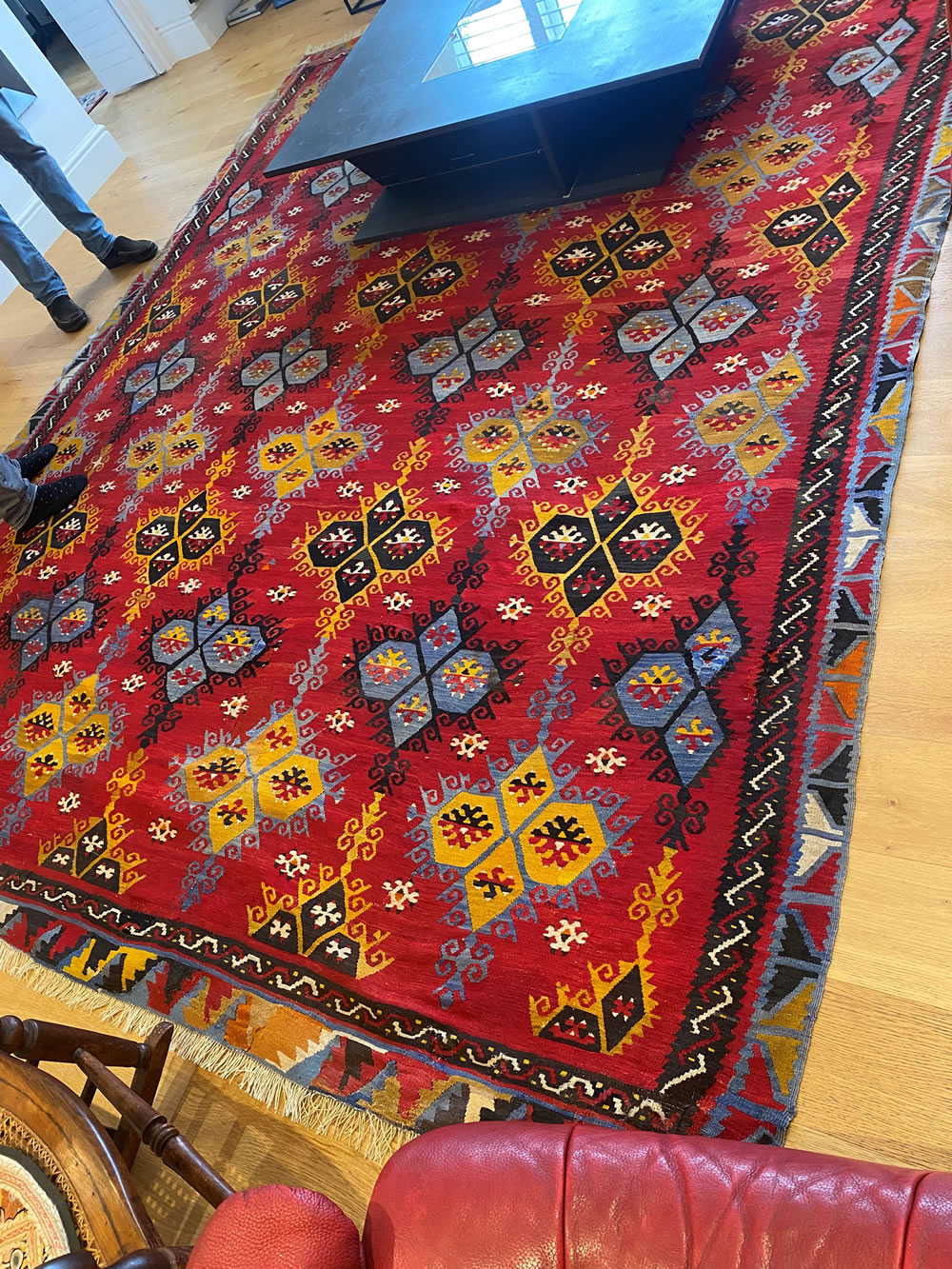Restore It - Don't Bin It
A Before & After Story of How Rugnurse repaired valuable old Kilim that everyone else thought was beyond saving...
No Holes Too Big — No Edges Too Torn — No Fringe Beyond Saving...
Take a look below at the damage our team were faced with before restoration work began — then scroll down to see the end result...

The Damaged Kilim Before Repair Work Began
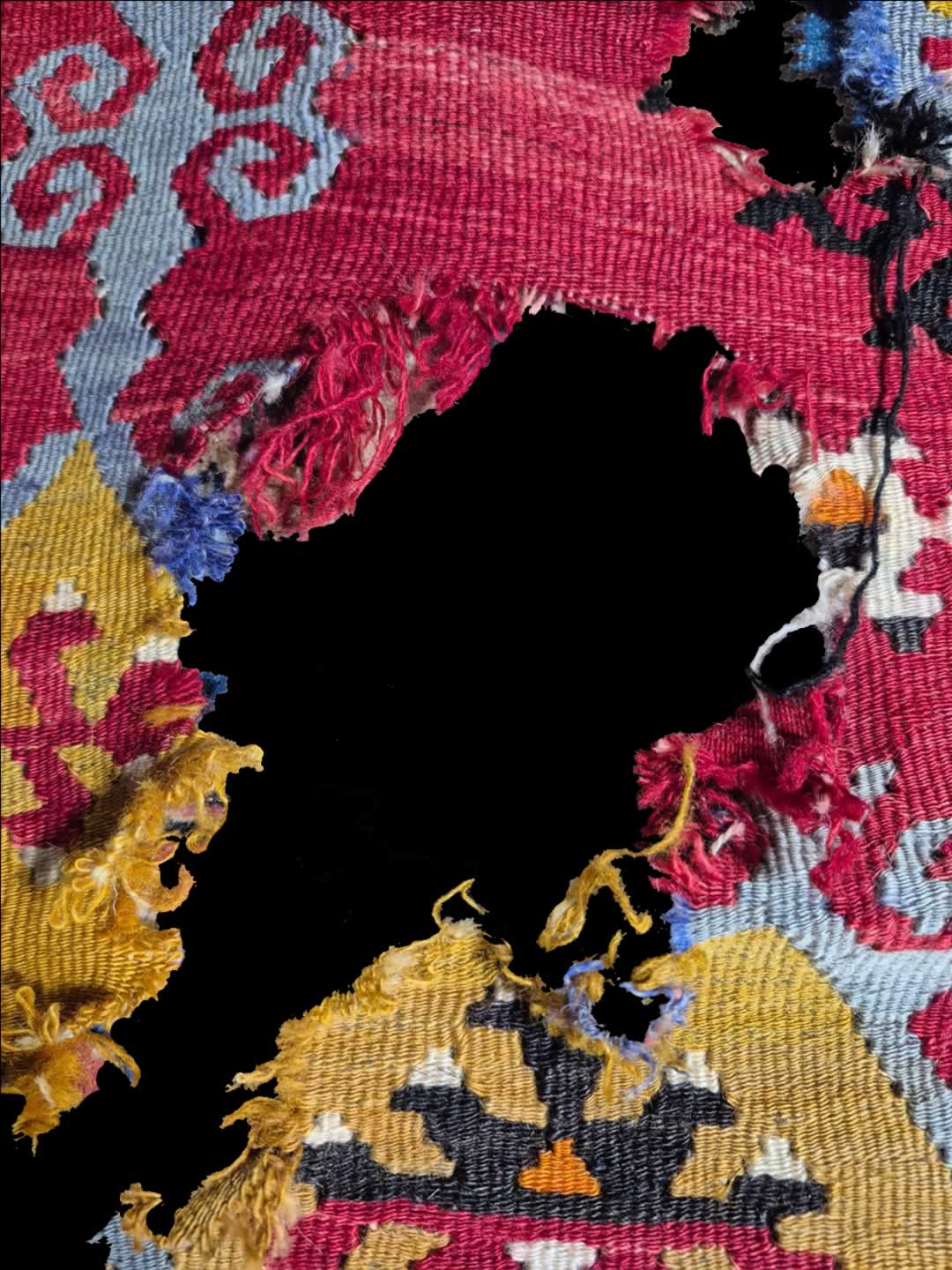
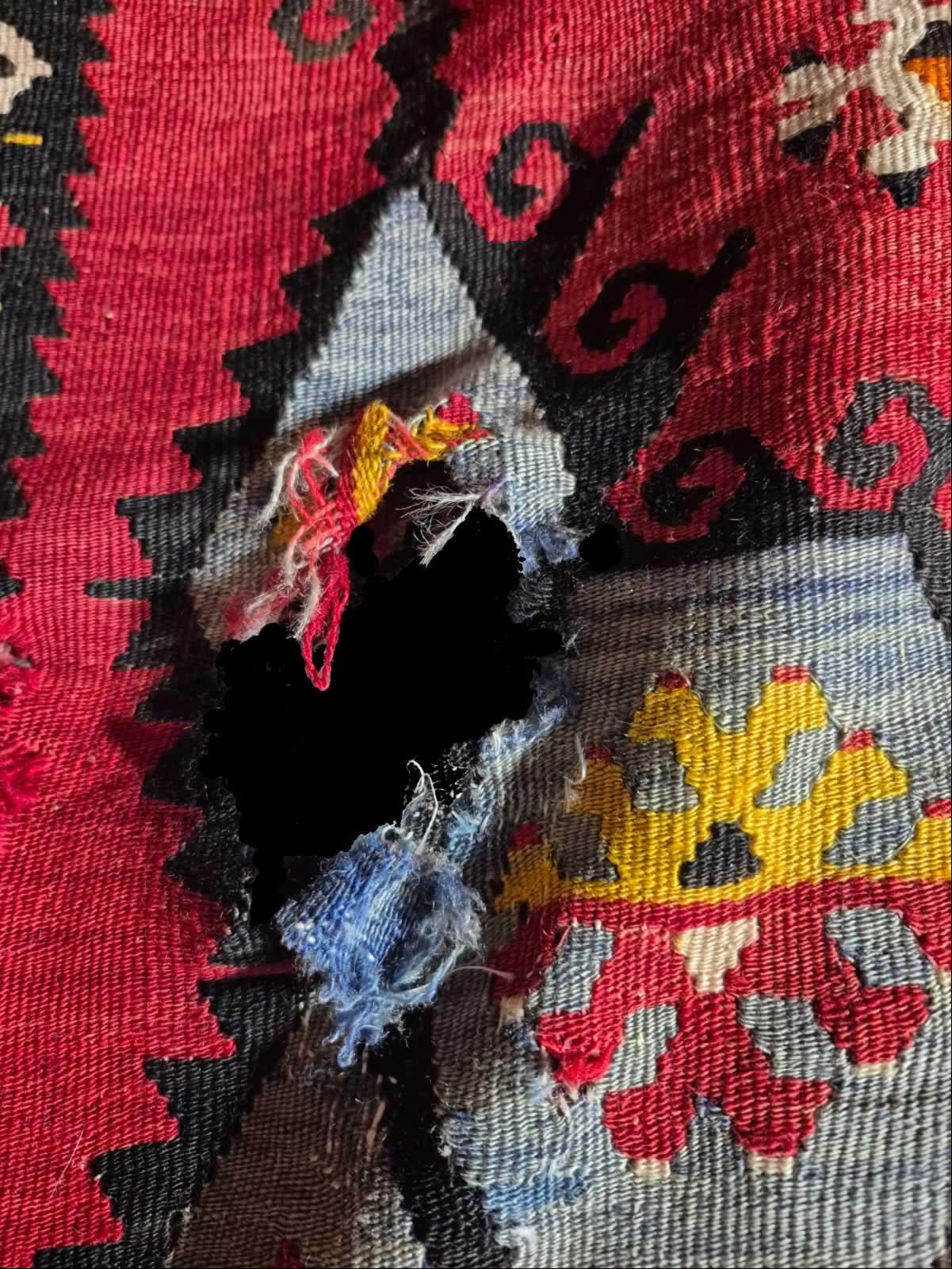
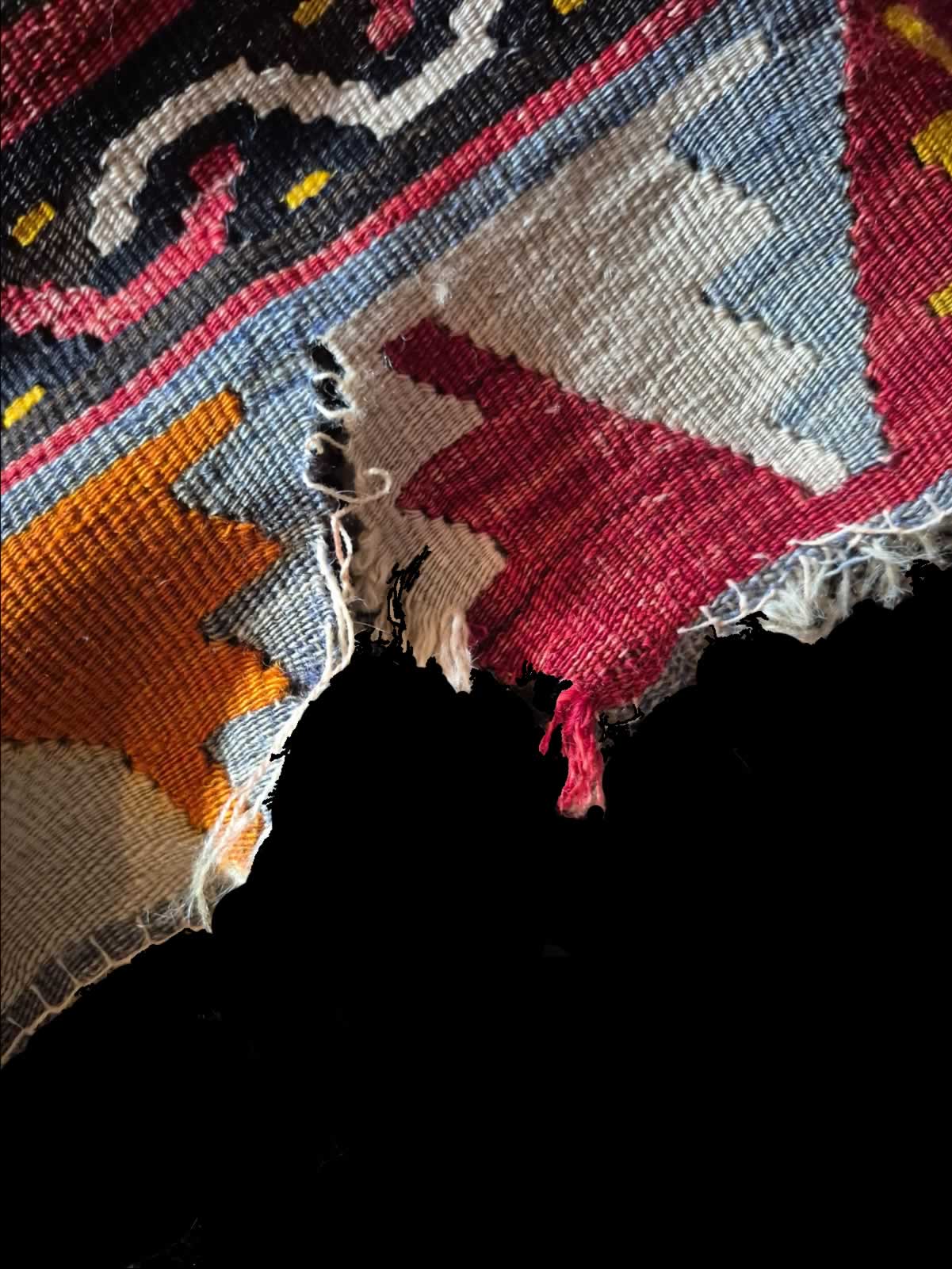
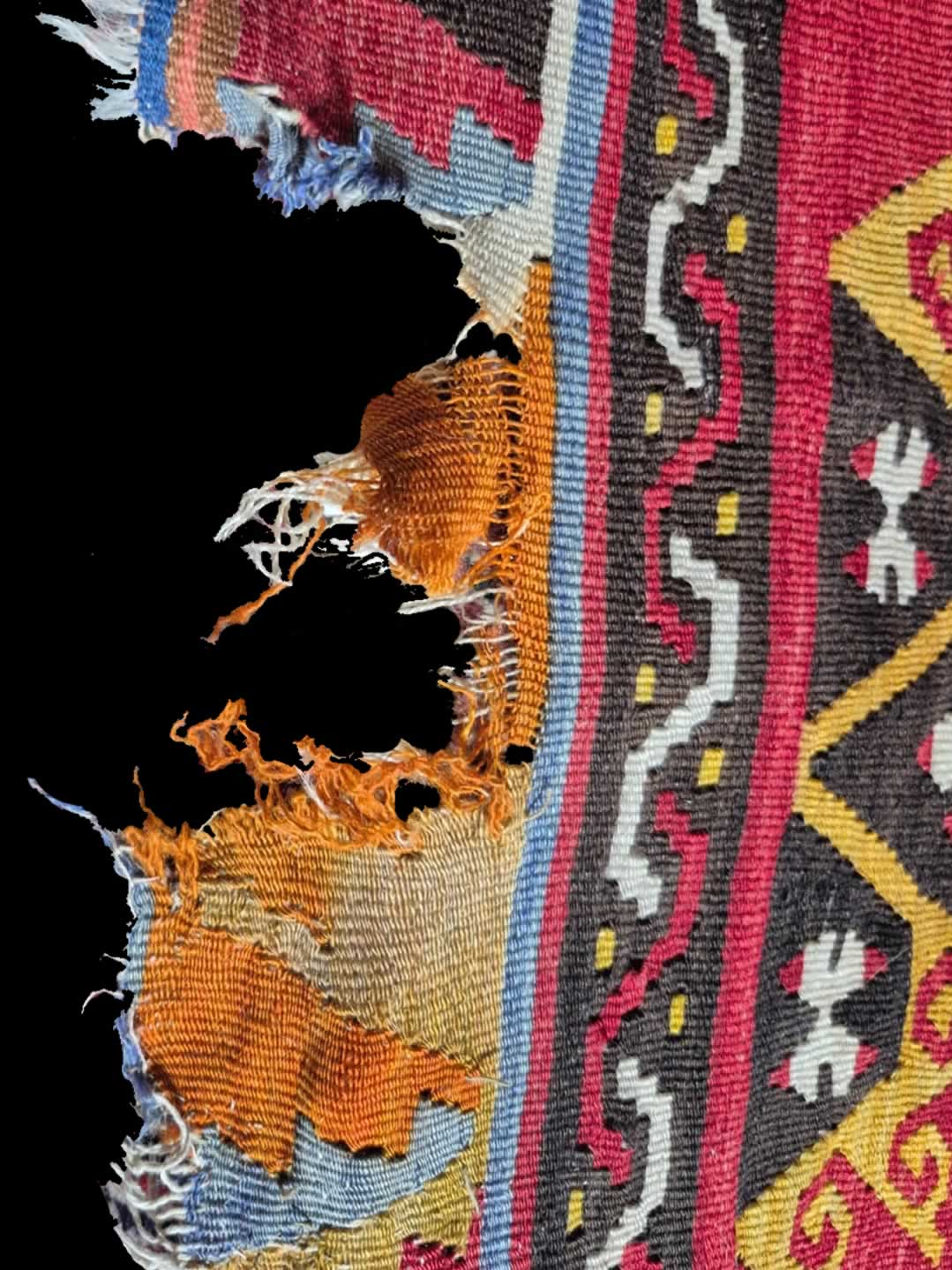
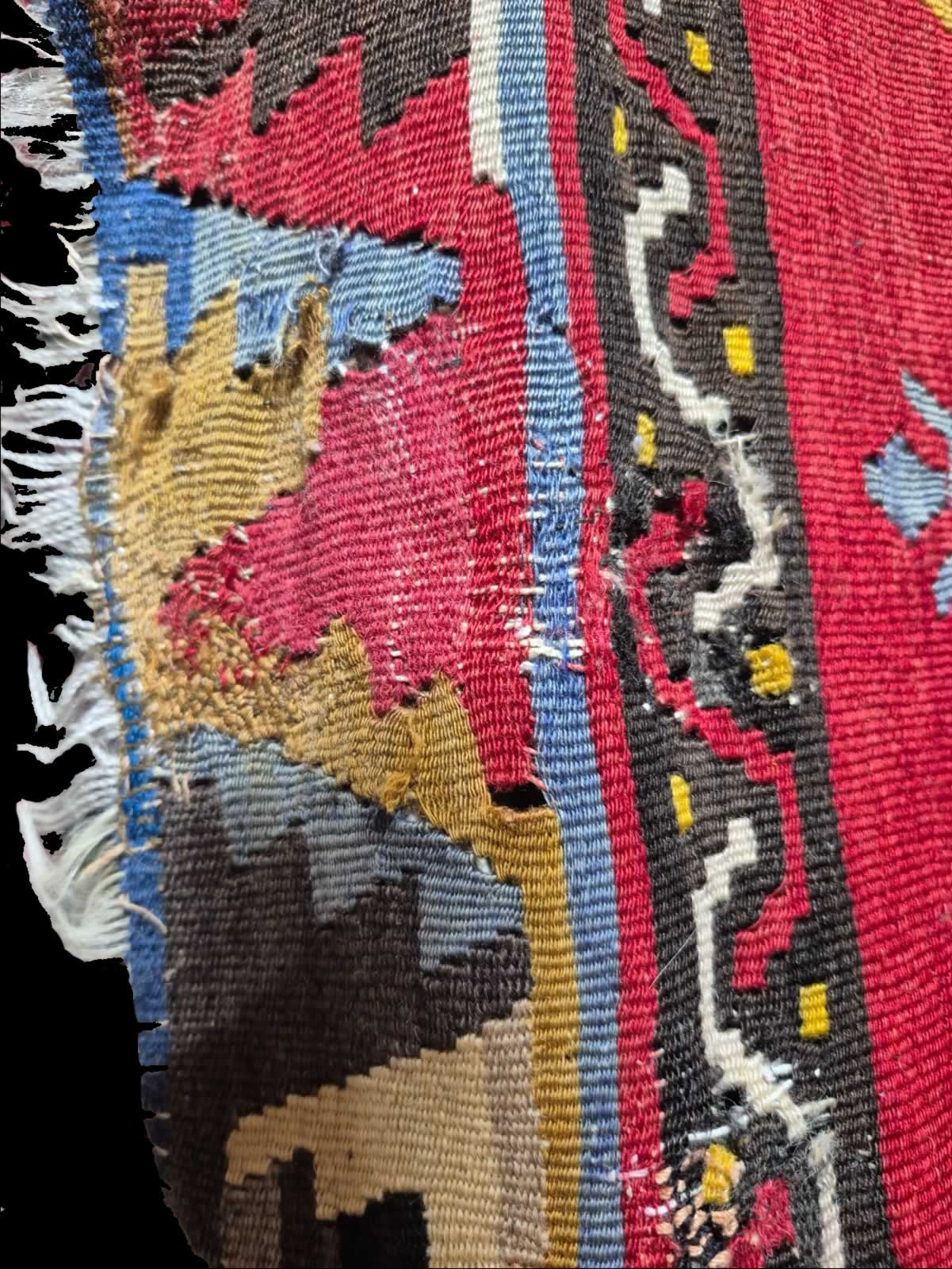
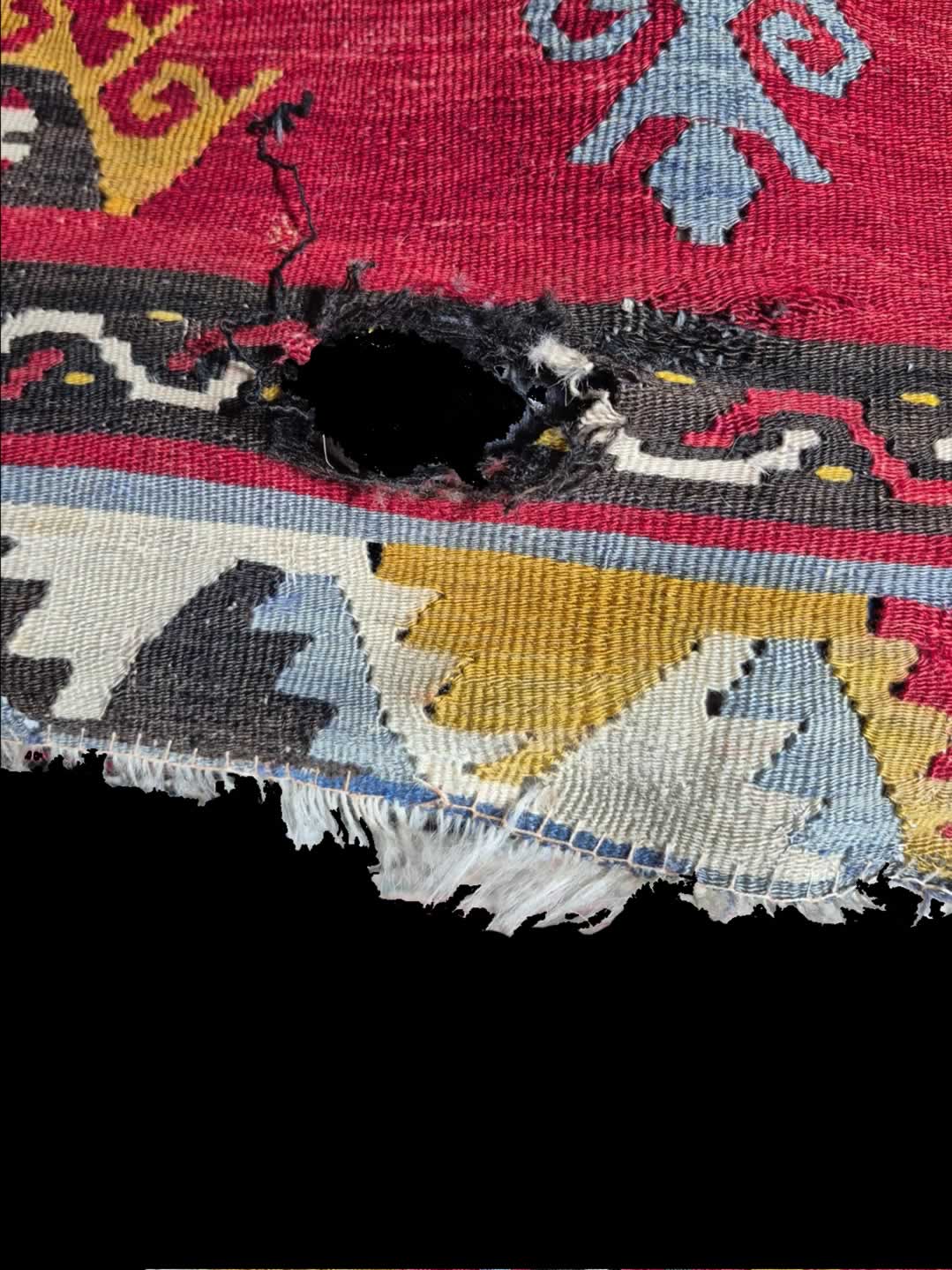
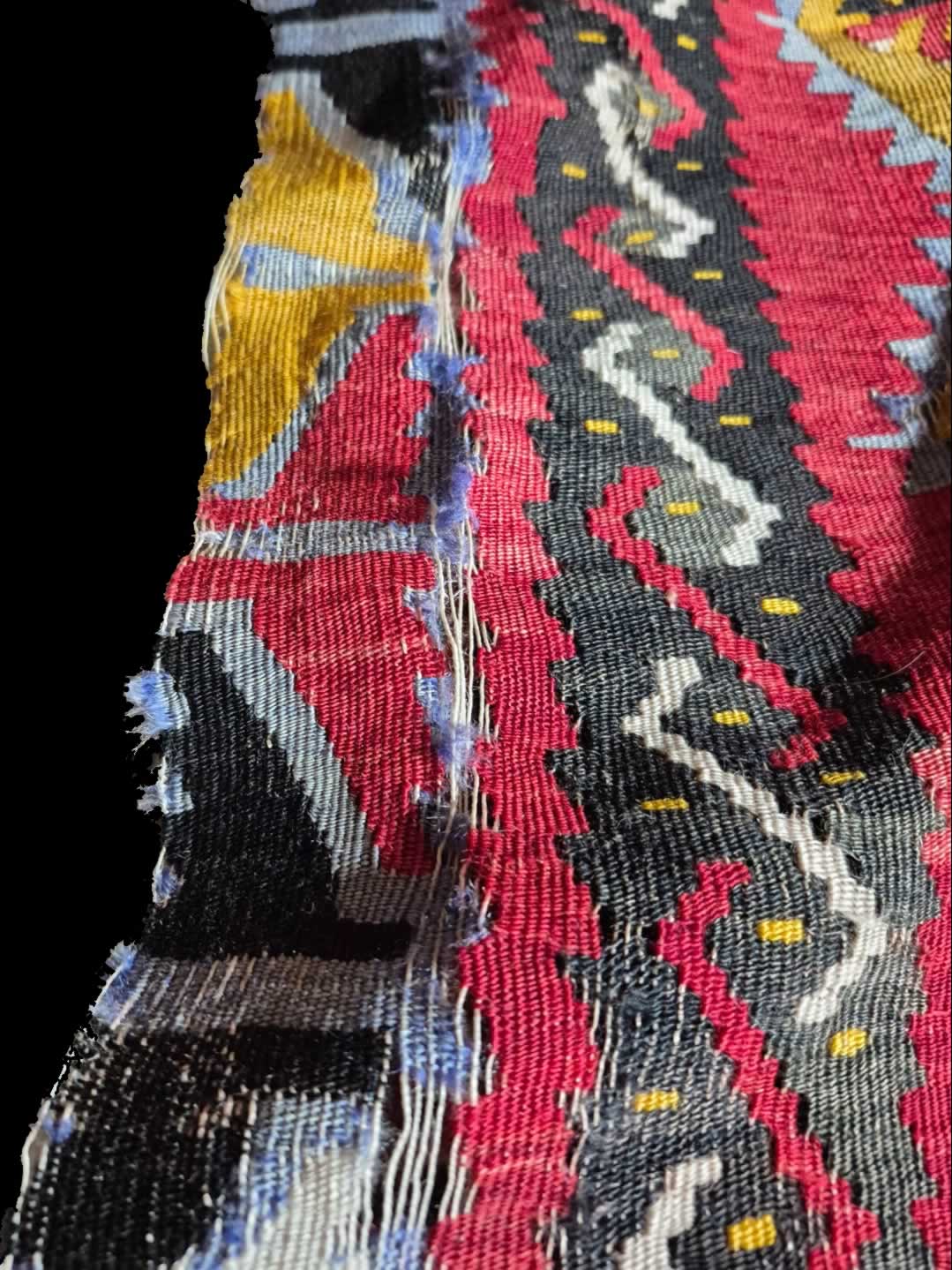
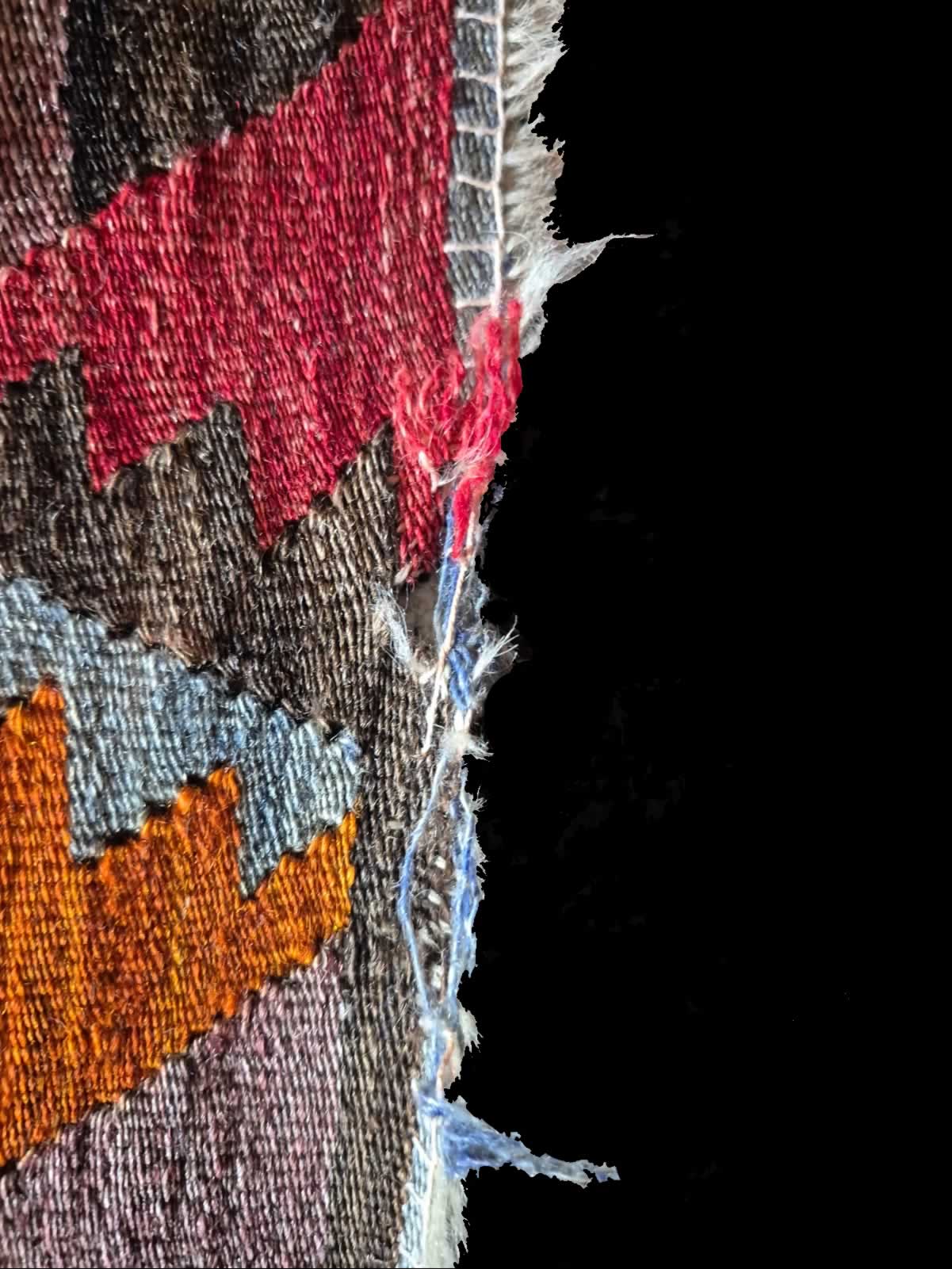
The rug was cleaned & insect treated, before the following repair work began:
- Holes (large & small): Rebuilt the missing foundation (warp), then re-inlaid/re-wove to match the original colours and motifs.
- Torn edges: Rewove lost edge sections with colour-matched wools, restoring the pattern and structure.
- Fringes: Replaced missing/compromised fringes across the full width and secured the ends to prevent future loss.
- Edge bindings (selvedges): Rebound and re-secured damaged/missing selvedges to stop unravelling.
- Structural consolidation: Stabilised threadbare areas and reinforced weak warps/wefts to prevent new rips, tears, or holes.
Why cleaning precedes rug repair
If a rug is repaired before cleaning, dirt and other contaminants in the rug may be sealed in, making it harder to remove them afterwards during the washing process. A clean Persian rug will show any damage or wear more clearly, making it easier for the specialist repairer to identify and address the issues.
Large Hole New Warp
Medium Hole New Warp
Large hole being rewoven on new warp
All edges repaired and fringe replaced
Got a rug that needs cleaning or repair?
We would love to hear from you. Give us a call on 07900 867 497, or email us using the form below, and we’ll get right back to you.
